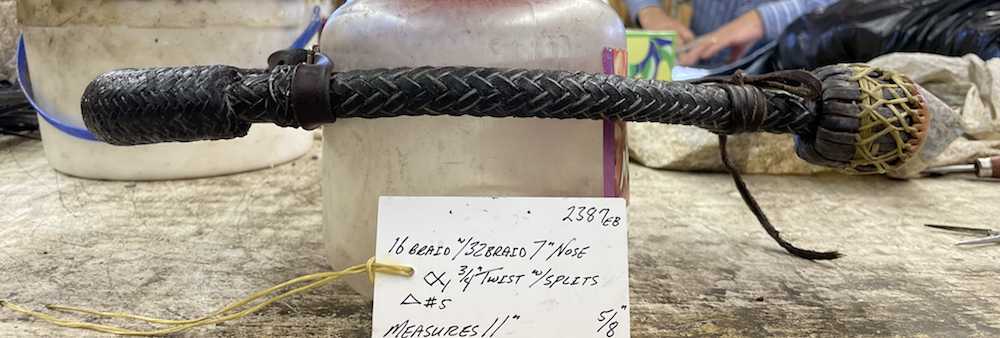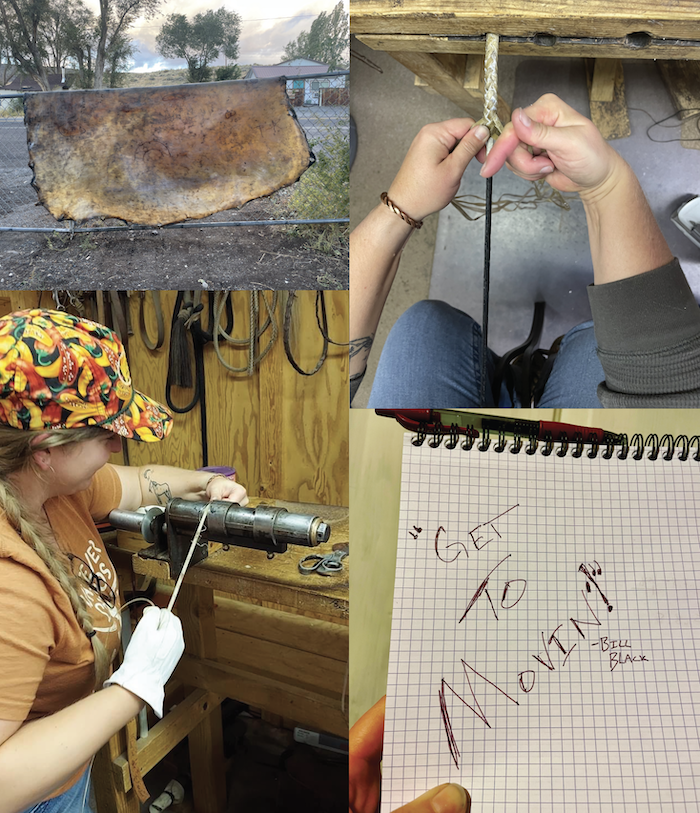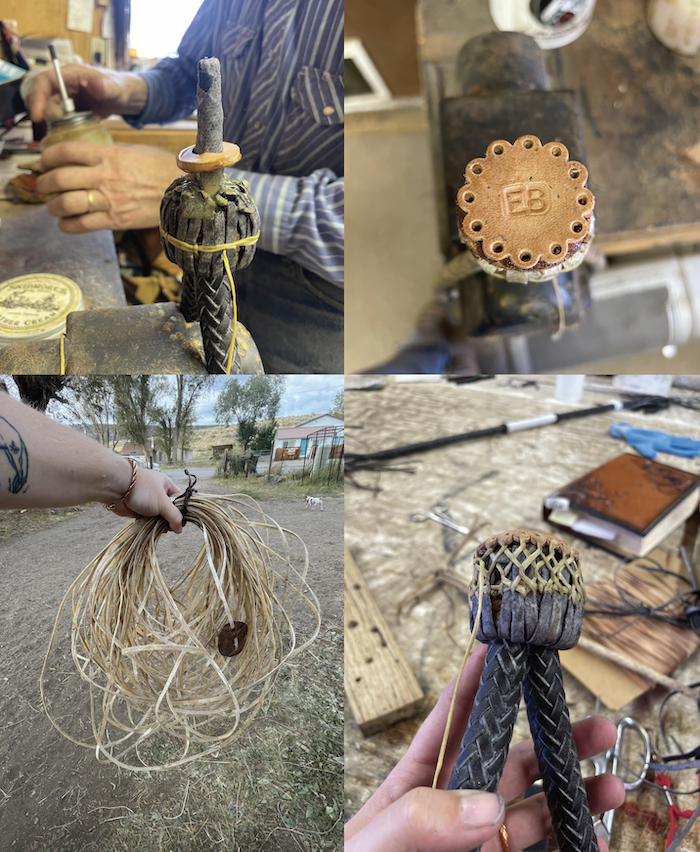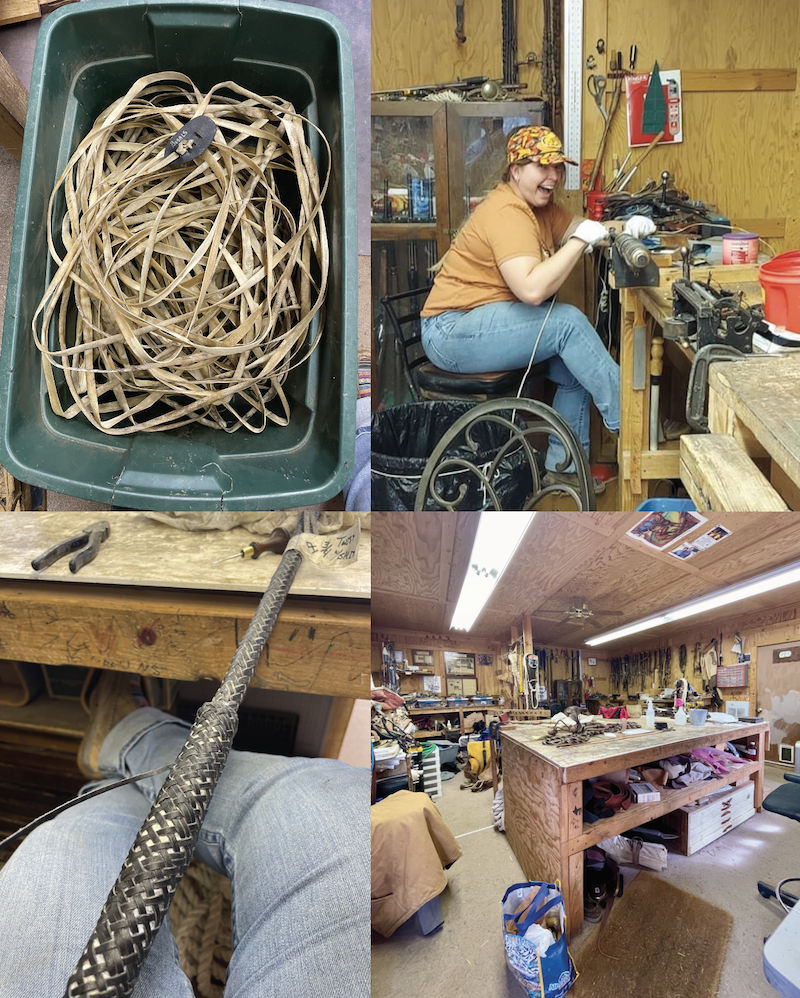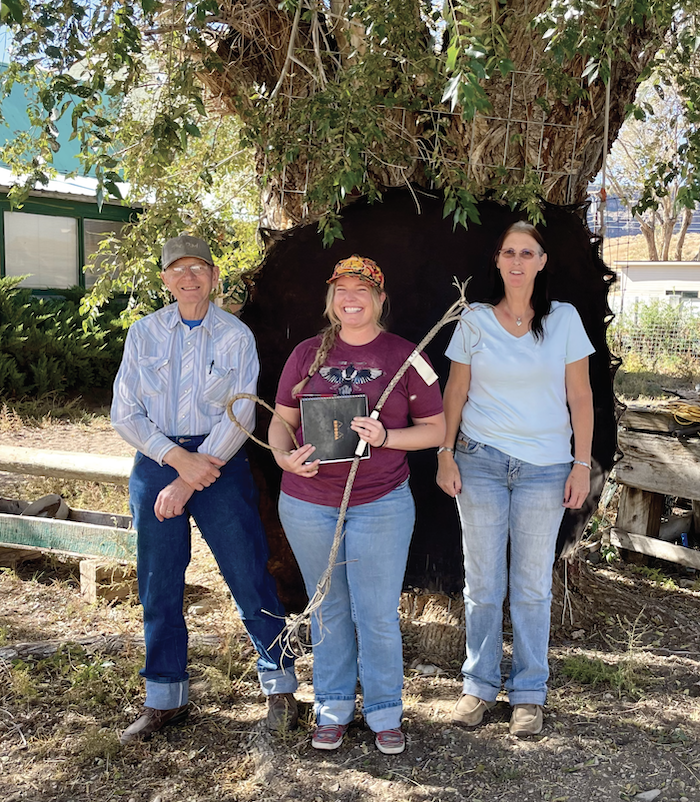SCHOLARSHIP STORIES
ERICA BEBOUT’S STORY
The short answer to how I got interested in my craft is winter is long The longer answer is that I’ve been in love with nice gear for a long time and always toyed with the idea of learning to braid my own gear for my own horses, as well as those of clients. And now that I’m living where there’s a real winter (aka not California), I needed something to keep my mind busy.
I chose to work with Bill Black because I appreciated his practicality and that he builds gear with purpose/function as a priority. I had seen his work out in the wild, but when I was searching for more knowledge and stumbled upon the Rawhider’s Gathering Facebook group, I found myself always looking for Bill’s posts and answers because I knew I was going to learn something.
During two weeks of working with Bill and Teresa at their home shop in Plush, OR. I learned everything I needed to know to start completing more types of projects on my own and asking more questions—from hide prep, splitting, cutting, tempering, braiding and finishing hackamores.
I got so incredibly much out of my workshop. Objectively, my skills improved immensely. Subjectively, I have more confidence in my abilities and in my ideas than when I set foot in Plush. I also came away with an entire notebook full of diagrams, measurements, stories and directions because I knew my brain wasn’t able to hold on to everything I’d be learning. That notebook is truly priceless and I reference it often.
One on one work is certainly not for the faint of heart, but, to me, it is the best way to take everything about your work to the next level. To have coaching along the way to catch mistakes before they turn into habits really makes a difference in the quality of information that is retained.
This scholarship experience has completely changed how I think about braiding. I was so focused on the details and numbers—I wanted things to be just right.
But in reality, this is a craft that did not begin in clean, heated shops with digital calipers and razor sharp blades used for only cutting rawhide. I was missing practicality in my process. Folks used to braid gear in bunkhouses with far less than the tools I have on my bench and rawhide is a living material (well, was more alive at one point...) and doesn’t require machine precision. Bill taught me about this with his stories from his rawhide experiences following a wagon and by driving home the point that most tools you need are something you can pick up at the hardware store or you can make. With those thoughts in mind, I made my process less complicated.
The experience really bolstered my skills, but I think more-so it’s built more confidence in myself. I’ve branched out and planned some more advanced projects for the coming year that I probably would not have attempted for a couple years without this workshop.
If I could go back and give myself advice in the beginning, I would ask questions instead of ruminating and looking for answers. I would talk to Bill sooner. I have always had a bit of an aversion to asking for help when starting something and I’m slowly getting over it. Most people who care about their craft really love talking about it, so send that message!
This scholarship experience has really allowed me to step into myself and move my life in a direction that I am very happy with. There’s also a larger sense of community that has come with all of this—makers, rawhiders, The Rodear. It’s been wonderful to be apart of these communities and build lifelong, supportive connections.

